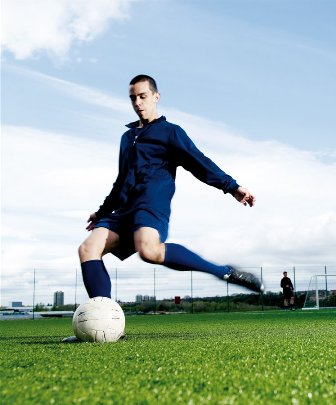
What is the difference between a good coach and a great coach?
Coaching as it should be done
Asked to name a ‘great coach’ many might trot out a stellar name like Wenger, Flower, Mallinder or Poyet. In contrast, John Eady has unearthed a diamond much closer to home.

What is the difference between a good coach and a great coach?
It was not until recently that it dawned on me that my son, now 13, had been exposed to a truly great coach. Having reached the heady heights of the Chew Moor Boys (CMB FC) second string U9s, then 10s, then 11s, then 12s, he started out as one of the players that a responsible coaching team tries to find some game time for when the result, one way or the other, has been decided.
Following some frustrating early seasons (for me as well as him), my son, who was always popular but not necessarily in demand on their field of play, was involved in an ill-advised but gutsy altercation with an opposing team player who must have had three stone and probably six inches on him at the time. More worryingly, while I was indulging in just a little ‘that’s ma boy!’ pride, it nearly spilled into an ‘off the field’ incident between me and the other player’s father, a battle that, unlike my son, I would almost certainly have lost.
The unforeseen but nonetheless welcome outcome was a boost in his status and confidence that, in effect, moved his hitherto fairly static personal goalposts. However, I digress.
The coach in question is part of what is an effective double act. His counterpart is the team’s organiser, manager and lead cheerleader, and a good and popular coach in his own right, despite having Scottish antecedents. The manager is universally respected and liked by the players and parents, and, with his wife, has organised what must now be hundreds of matches, training sessions (across multiple venues), social events (for the players and parents) and annual prize-givings.
His ‘oppo’, however, has a real gift. He, like me, went through several years of his son being ‘one of the extras’, bearing this with a level of supreme impartiality that I could never summon. He, too, had the reward of seeing his son mature into a central team player and now a key goal scorer.
What makes him stand out for me – and I have spent many years both in teams and on touchlines, across a range of sports – is that he doesn’t just see what happens, he sees what young players are trying to do. He has a way of interpreting this from the touchline, then encouraging and cajoling in a way that still leaves players room for (and more importantly the confidence to exercise) individual thought and decision-making.
He also has – and has maintained over years that have seen small boys grow into croaky voiced teenagers – the knack of practically and metaphorically putting his arm round a boy’s shoulder at half-time or after a game to talk him through what he did well and where the room for improvement lies. In so doing he almost invariably leaves the player feeling that his on-the-pitch efforts, whether unsuccessful or successful in terms of his own game and the result, were worthwhile.
This ability to notice, record, analyse and praise intention as well as just the outcome of a player’s actions and, over an extended period, to draw out optimum levels of individual potential irrespective of the actual talent the player has to start with is for me one of the hallmarks of the great coach.
This is literally ‘player development’, a rare and truly valuable art. It is surely this, and people who do this, that we must recognise, define, nurture and simply appreciate; without stifling the essential humanity that underpins it.
John Eady is managing director of KKP Consulting and has plenty of sporting previous both on and off the pitch
The Leisure Review, February 2011
© Copyright of all material on this site is retained by The Leisure Review or the individual contributors where stated. Contact The Leisure Review for details.
Download a pdf version of this article for printing